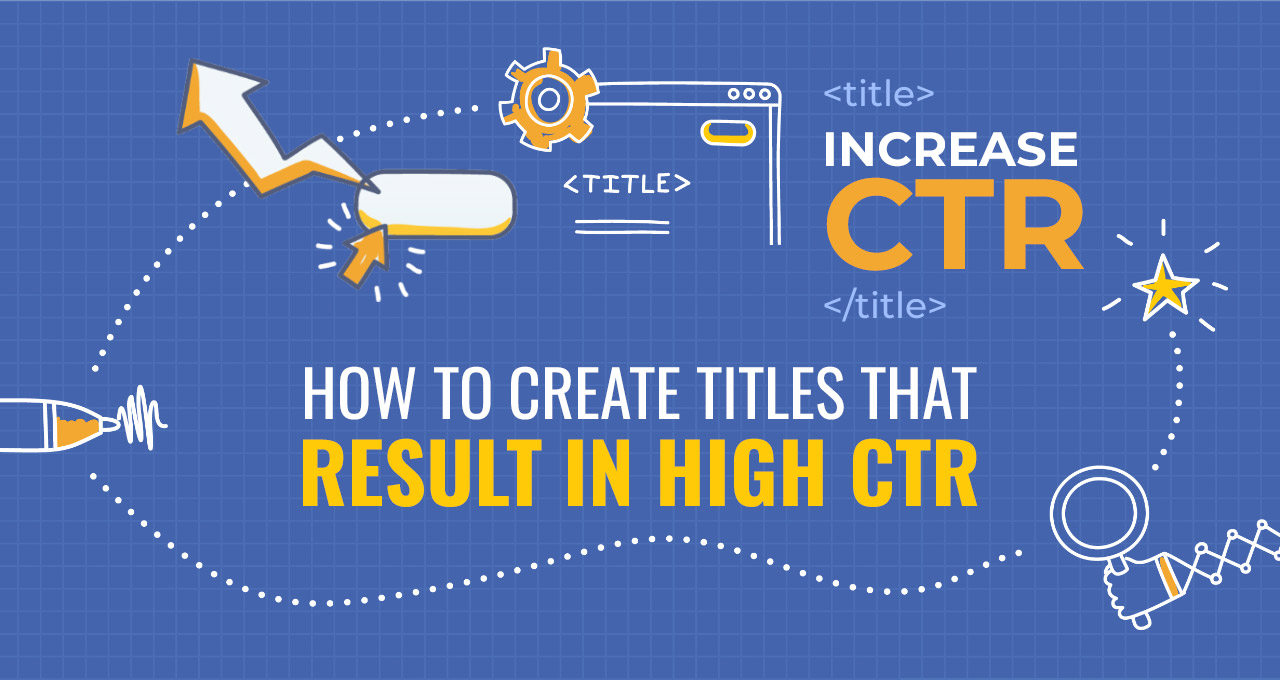How to Create Titles that result in high CTR?

From Good to Great: Crafting Titles That Deliver High CTR
A title is like a gateway to your content. It is one of the important factors which can provide an SEO edge. A good title matches the search intent which leads to high CTR (Click-through Rate). Search algorithms are designed to provide higher rankings to content that is relevant to the search intent of the user.
Title should be brief and informative
A title should express a short summary of your content. It should be less than 60 characters as titles with more characters will not be entirely visible on search results. It shouldn’t be a click-bait. This is considered bad UX design. So, keep your site’s title short and informative. A title should also not be all caps.
Unique Title for every page
It is extremely important as same page titles will confuse users as well as search engines. For large complex websites, where you cannot create unique titles, make a template title and change the variable elements in that template. Sometimes, you may have similar content, and therefore designing a unique title gets really hard, in that case, strive for unique content primarily.
Don’t overuse keywords
Keyword stuffing is a black hat strategy that involves the overuse of a targeted keyword. Google penalizes websites that do keyword stuffing in any element of the page. This practice is penalized because it reduces the quality of the content drastically.
Now, let us see how modifiers i.e., extra keywords can be used to create titles enticing.
In titles with more than one keyword or modifier, you should always try to place the main keyword phrase close to the beginning of the ‘title’ tag in the source code. The weight of the keyword phrase is reduced as it moves away from the ‘title’ tag.
Combining keywords and action words can create unique descriptive titles which are apt for niche content. You can use tools like Google Keyword Planner to find the relevant keywords for your content. Modifier keywords highlight the uniqueness of your content. Depth, quantity, speed, freshness, brand, pain points – all can add uniqueness to your content. Suppose, you have two keywords relevant to your content like “African American books” and “books for beginners”, now you can add year in the title to create a sense of freshness. So, your title can be – “African American books for beginners (2022)”.
Data shows framing titles as questions, guides, or enhancing curiosity have high CTR. Similarly, power words i.e., adjectives make titles more descriptive, like, “JavaScript guide that will make you a pro”. Adding numbers in the title also results in high CTR, like, “15 best African American books by female authors”. The real objective is to design titles which will match the intent of the user’s search.
You can use a comma (,), a colon (:), a dash (-), brackets or a pipe (|) to separate multiple phrases. The point of using separators is to make titles more readable. So, avoid separators if it makes the title illegible.
You can add more descriptions relevant to your content in the meta description tag. This description is picked up by Google and displayed under the title on the search result pages. Additional description goes inside tag in the source code. If your description doesn’t match the intent of the search, Google will automatically discard this description and generate a relevant one by itself by analyzing your content.
Designing titles is a creative task. But that doesn’t mean you should overthink or overuse keywords. The best strategy is always to look for relevant keywords and design them in a way to match the search intent. Optimizing titles may lead to marginal gains. But even a 1% marginal gain in CTR may mean high traffic coming to your website. Tittle optimization coupled with high-quality content may convert your audience into actual customers.




